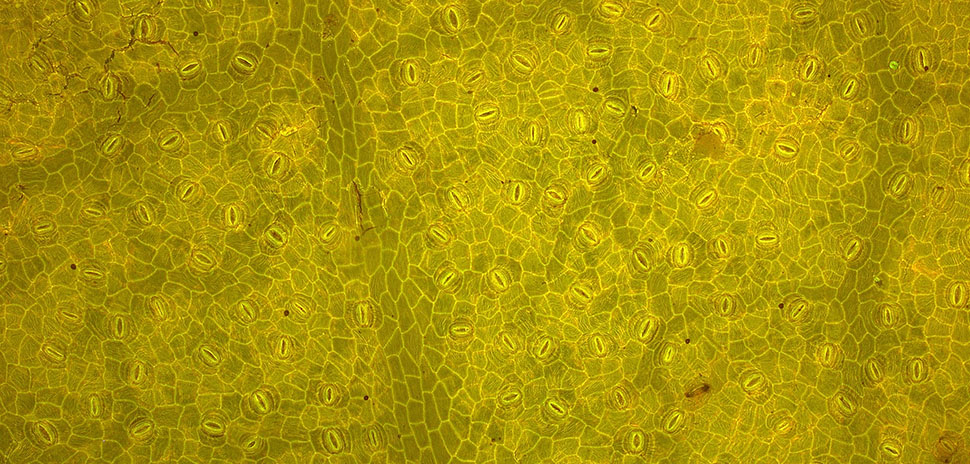SMU RESEARCHERS CONFIRM ANCIENT GLOBAL WARMING LINK
![]() Researchers at Southern Methodist University in Dallas examined fossil leaves from Ethiopia to determine that a link between carbon dioxide and global warming existed 22 million years ago.
Researchers at Southern Methodist University in Dallas examined fossil leaves from Ethiopia to determine that a link between carbon dioxide and global warming existed 22 million years ago.
The research will help scientists understand how recent and future rises in atmospheric carbon dioxide concentration could impact Earth’s future, SMU said in a release.
The researchers published their findings in Geology, the scientific journal of the Geological Society of America.
Lead scientist Tekie Tesfamichael said the discovery comes from new biochemical analyses of fossil leaves that grew 27 million years ago and 22 million years ago. The analyses confirm research about modern climate — that global temperatures fall and rise along with the decreases and increases in atmospheric carbon dioxide. You can discover more on this research here.
“The more we understand about the relationship between atmospheric carbon dioxide concentrations and global temperature in the past, the more we can plan for changes ahead,” Tesfamichael, an SMU postdoctoral fellow in Earth Sciences, said in the release.

[Illustration Copyright LeshkaSmok via iStock]
EX-NFL PLAYERS MORE PRONE TO ENLARGED AORTAS, STUDY FINDS
Former players in the National Football League are at greater risk of having enlarged aortas, researchers at UT Southwestern Medical Center have discovered.
That puts them at greater risk of life-threatening aneurysms, the researchers with the Dallas Heart Study at UT Southwestern Medical Center said.
“Is this a normal adaptation from having trained at the elite level throughout their youth, or is this a bad adaptation that puts them more at risk for problems.”
Dr. Parag Joshi
According to a release, the researchers said that ex-NFL players are twice as likely to have enlarged aortas as people in a control group drawn from the heart study.
The aorta is the main artery of the body that supplies oxygenated blood to the circulatory system.
“Whether that translates to the same risk for these former elite athletes as a dilated, or enlarged, aorta does for the general public is unclear,” Dr. Parag Joshi, assistant professor of internal medicine and one of the study’s author’s said. “Is this a normal adaptation from having trained at the elite level throughout their youth, or is this a bad adaptation that puts them more at risk for problems.”
According to the study, almost 30 percent of the ex-NFL players studied had enlarged aortas.
That’s compared to fewer than 9 percent in the comparison group from the Dallas Heart Study, a unique population-based study to identify new genetic, protein, and imaging biomarkers that can detect cardiovascular disease at its earliest point — the stage at which prevention is most effective, UTSW said.

Penny backer Bridge Middle of Wildflower Field Central Texas. [Photo Copyright RoschetzkyIstockPhoto via iStock]
BRIT, TPWD SIGN MEMORANDUM OF UNDERSTANDING
The Botanical Research Institute of Texas in Fort Worth and the Texas Parks and Wildlife Department have signed a memorandum of understanding that formalizes their commitment to plant conservation, exploration, and education.
The agreement creates a collaborative working relationship that will advance plant conservation and programs that will educate the public about the importance of maintaining wild spaces for the health and well-being of all Texans, BRIT said in a press release.
“Our partnership with BRIT helps us keep our commitment to Texas’ wild things and wild places.”
Carter Smith
Among other things as part of the agreement, the organizations will collaborate on providing outdoor education, exhibit development, and interpretive media projects and other services for state natural areas and state parks.
“What makes this collaboration so important is that we’re not just getting one botanist to help identify rare plants, we’re getting BRIT’s full complement of research botanists and environmental educators to work with us,” Carter Smith, executive director of the Texas Parks and Wildlife Department, said in the release. “Our partnership with BRIT helps us keep our commitment to Texas’ wild things and wild places.”
Collaborative programs are already underway, the organizations said, with one program looking at the distributions of 10 rare Texas plants and providing training materials for citizen scientists to go in the field and look for new populations.
“As the newest Texas member of the Center for Plant Conservation (CPC) organization, BRIT’s goal of documenting and protecting rare native plants is paramount,” BRIT Executive Director Ed Schneider said in the release. “Our research and education work with the Texas Parks and Wildlife Department ensures that these plants will be discovered, protected, and appreciated by future generations of Texans”
MORE READING
Discovery: Manatees Rescued, Top Analytical Scientists, Changing the Laws of Physics?
Discovery: Opioid Crisis, Autism Research & Exxon Biodiesel Tech
![]()
Get on the list.
Sign up to keep your eye on what’s new and next in Dallas-Fort Worth, every day.
And, you’ll be the first to get the digital edition of our new Dallas Innovates magazine:
The annual edition publishes in January

































